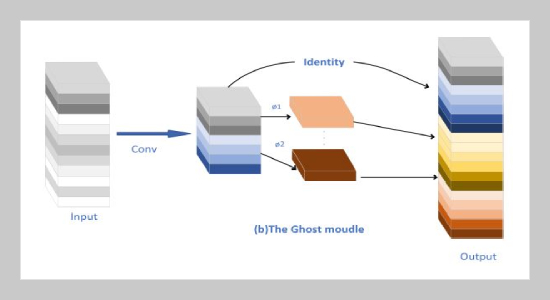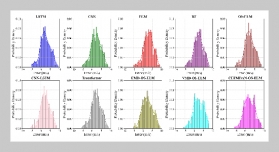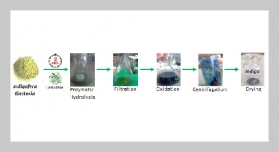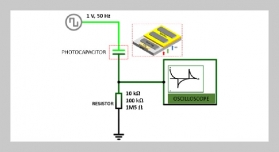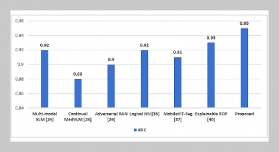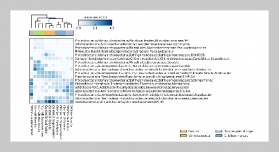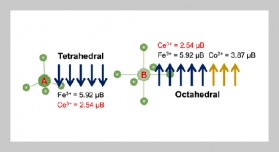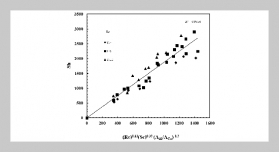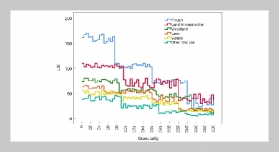REFERENCES
- [1] S. K. Mishra and S. Das. “A Review on Vision Based Control of Autonomous Vehicles Using Artificial Intelligence Techniques”. In: 2019 International Conference on Information Technology (ICIT). IEEE. 2019, 500–504.
- [2] T. Mekki, I. Jabri, A. Rachedi, and M. B. Jemaa, (2019) “Vehicular cloud networking: evolutionary game with reinforcement learning-based access approach" International Journal of Bio-Inspired Computation 13(1): 45–58.
- [3] M. Kamalesh, B. Chokkalingam, J. Arumugam, G. Sengottaiyan, S. Subramani, M. A. Shah, et al., (2021) “An Intelligent Real Time Pothole Detection and Warning System for Automobile Applications Based on IoT Technology" Journal of Applied Science and Engineering 24(1): 77–81.
- [4] C.-R. Dow, H.-H. Ngo, L.-H. Lee, P.-Y. Lai, K.-C. Wang, and V.-T. Bui, (2020) “A crosswalk pedestrian recognition system by using deep learning and zebracrossing recognition techniques" Software: Practice and Experience 50(5): 630–644.
- [5] J. Hosang, R. Benenson, P. Dollár, and B. Schiele, (2015) “What makes for effective detection proposals?" IEEE transactions on pattern analysis and machine intelligence 38(4): 814–830.
- [6] A. Krizhevsky, I. Sutskever, and G. E. Hinton, (2012) “Imagenet classification with deep convolutional neural networks" Advances in neural information processing systems 25: 1097–1105.
- [7] K. Simonyan and A. Zisserman, (2014) “Very deep convolutional networks for large-scale image recognition" arXiv preprint arXiv:1409.1556:
- [8] K. He, X. Zhang, S. Ren, and J. Sun. “Deep residual learning for image recognition”. In: Proceedings of the IEEE conference on computer vision and pattern recognition. 2016, 770–778.
- [9] S. Ren, K. He, R. Girshick, and J. Sun, (2016) “Faster R-CNN: towards real-time object detection with region proposal networks" IEEE transactions on pattern analysis and machine intelligence 39(6): 1137–1149.
- [10] K.-H. Kim, S. Hong, B. Roh, Y. Cheon, and M. Park, (2016) “Pvanet: Deep but lightweight neural networks for real-time object detection" arXiv preprint arXiv:1608.08021:
- [11] J. Dai, Y. Li, K. He, and J. Sun. “R-fcn: Object detection via region-based fully convolutional networks”. In: Advances in neural information processing systems. 2016, 379–387.
- [12] S. Gidaris and N. Komodakis. “Object detection via a multi-region and semantic segmentation-aware CNN model”. In: Proceedings of the IEEE international conference on computer vision. 2015, 1134–1142.
- [13] Z. Cai and N. Vasconcelos. “Cascade r-cnn: Delving into high quality object detection”. In: Proceedings of the IEEE conference on computer vision and pattern recognition. 2018, 6154–6162.
- [14] N. Bodla, B. Singh, R. Chellappa, and L. S. Davis. “Soft-NMS-improving object detection with one line of code”. In: Proceedings of the IEEE international conference on computer vision. 2017, 5561–5569.
- [15] C. Szegedy, W. Liu, Y. Jia, P. Sermanet, S. Reed, D. Anguelov, D. Erhan, V. Vanhoucke, and A. Rabinovich. “Going deeper with convolutions”. In: Proceedings of the IEEE conference on computer vision and pattern recognition. 2015, 1–9.
- [16] T. Kong, A. Yao, Y. Chen, and F. Sun. “Hypernet: Towards accurate region proposal generation and joint object detection”. In: Proceedings of the IEEE conference on computer vision and pattern recognition. 2016, 845–853.
- [17] J. Redmon, S. Divvala, R. Girshick, and A. Farhadi. “You only look once: Unified, real-time object detection”. In: Proceedings of the IEEE conference on computer vision and pattern recognition. 2016, 779–788.
- [18] J. Redmon and A. Farhadi. “YOLO9000: better, faster, stronger”. In: Proceedings of the IEEE conference on computer vision and pattern recognition. 2017, 7263–7271.
- [19] J. Redmon and A. Farhadi, (2018) “Yolov3: An incremental improvement" arXiv preprint arXiv:1804.02767:
- [20] A. Bochkovskiy, C.-Y.Wang, and H.-Y. M. Liao, (2020) “Yolov4: Optimal speed and accuracy of object detection" arXiv preprint arXiv:2004.10934:
- [21] W. Liu, D. Anguelov, D. Erhan, C. Szegedy, S. Reed, C.-Y. Fu, and A. C. Berg. “Ssd: Single shot multibox detector”. In: European conference on computer vision. Springer. 2016, 21–37.
- [22] J. Hu, L. Shen, and G. Sun. “Squeeze-and-excitation networks”. In: Proceedings of the IEEE conference on computer vision and pattern recognition. 2018, 7132–7141.
- [23] G. Huang, Z. Liu, L. Van Der Maaten, and K. Q.Weinberger. “Densely connected convolutional networks”. In: Proceedings of the IEEE conference on computer vision and pattern recognition. 2017, 4700–4708.
- [24] A. Geiger, P. Lenz, and R. Urtasun. “Are we ready for autonomous driving? the kitti vision benchmark suite”. In: 2012 IEEE conference on computer vision and pattern recognition. IEEE. 2012, 3354–3361.
- [25] M. Cordts, M. Omran, S. Ramos, T. Rehfeld, M. Enzweiler, R. Benenson, U. Franke, S. Roth, and B. Schiele. “The cityscapes dataset for semantic urban scene understanding”. In: Proceedings of the IEEE conference on computer vision and pattern recognition. 2016,3213–3223.
- [26] F. Yu, H. Chen, X.Wang,W. Xian, Y. Chen, F. Liu, V. Madhavan, and T. Darrell. “Bdd100k: A diverse driving dataset for heterogeneous multitask learning”. In: Proceedings of the IEEE/CVF conference on computer vision and pattern recognition. 2020, 2636–2645.


